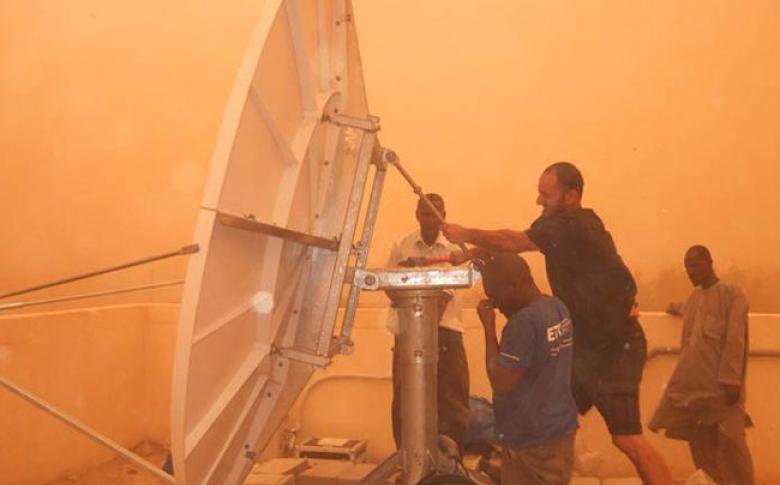Four Emergencies Test the Limits of the ETC

The end of 2013 saw the response capacity of the Emergency Telecommunications Cluster (ETC) tested as never before.
In addition to the long-running Syria conflict, three more emergencies were declared in rapid succession as Typhoon Haiyan decimated the Visayas region of the Philippines and conflict erupted in both the Central African Republic and South Sudan. All operations demanded rapid and substantial deployment of IT and telecommunications staff and equipment to support the humanitarian response.
Oh, and it was the end of year holiday period.
This concentration of calamities was completely unprecedented. For the first time ever, there were four simultaneous large-scale operations. The ability of the ETC to deliver fast and effective IT and telecommunications services in each operation was due to two key factors: preparedness and collaboration.
Less than 24 hours after Typhoon Haiyan struck the Philippines, the ETC had deployed an experienced and highly-skilled emergency response team carrying pre-configured and pre-tested solutions to establish communications networks on the ground; a capability only possible due to the partnership between the ETC, Ericsson Response and emergency.lu.
The unique skills required in such high-pressure emergency situations are developed and sharpened in intensive inter-agency training programmes. Both OpEx Bravo and the IT Emergency Management Training (IT EMT), developed in collaboration with a number of ETC partners, and funded by the Vodafone Foundation, simulate emergency environments, preparing participants practically and psychologically.
"It became clear to me during the development of the IT Emergency Management Training in Pisa, that 90 percent of what's needed to succeed in emergency work is preparedness," says Paul Margie, the US Representative for Télécoms Sans Frontières. "The people who work together in the field need to train together and get to know each other before the crisis."
The personal bonds forged during such high-intensity training are a fundamental aspect of effective response, and were vital in the Philippines where close collaboration between all ETC partners, including emergency.lu, Ericsson Response, Save the Children, NetHope and their partner BT, Irish Aid, Plan International and the World Food Programme (WFP), ensured efficient and effective provision of shared IT and telecommunications services.
Sylvain Tiako, FITTEST ICT Specialist, prepares to climb a radio tower in the Central African Republic which has recently been riven by conflict. Photo credit: WFP/Michael Dirksen
In Syria, the ETC will work with WFP, the UN Department of Safety and Security (UNDSS), and the UN Development Programme (UNDP) to enhance delivery of radio communication services to the humanitarian community, improving security in the field. In the Central African Republic vital communications services will be provided to humanitarians in some of the most remote parts of the country as a result of joint assessment missions with WFP, UNDSS and the UN Children's Fund (UNICEF).
"It says much about the dedication of ETC partners that the response to each emergency has been so effective," says Jakob Kern, Chair of the Global ETC and WFP Chief Information Officer. "To be tested in such an unprecedented way and continue to provide rapid and extremely effective telecommunications capacity is an incredible achievement."
While the Philippines has recovered rapidly, the situations in South Sudan, Central African Republic and Syria show little sign of improvement. In South Sudan alone, an estimated 4.9 million people are in need of urgent humanitarian assistance. The ETC is appealing for US$2.4million to provide vital communications services to humanitarians operating in this war-torn country.
But as the latest disasters battle for public, and donor, attention on the nightly news, it's important not to forget that there are other, longer-running emergencies no less deserving of attention and funds on account of their longevity. In Mali, there are still around 200,000 Internally Displaced Persons (IDPs) and 800,000 people in need of assistance. The ETC maintains a Coordinator in Bamako to provide telecommunications assistance to the humanitarian community.
Four concurrent emergencies may have tested the limits of the ETC. But constant training and a network of highly-specialised partners has set those limits extremely high. No matter where in the world emergencies occur, from the lush forests of the Philippines to the dusty deserts of South Sudan or Mali, the ETC is always prepared for a fast, effective response.